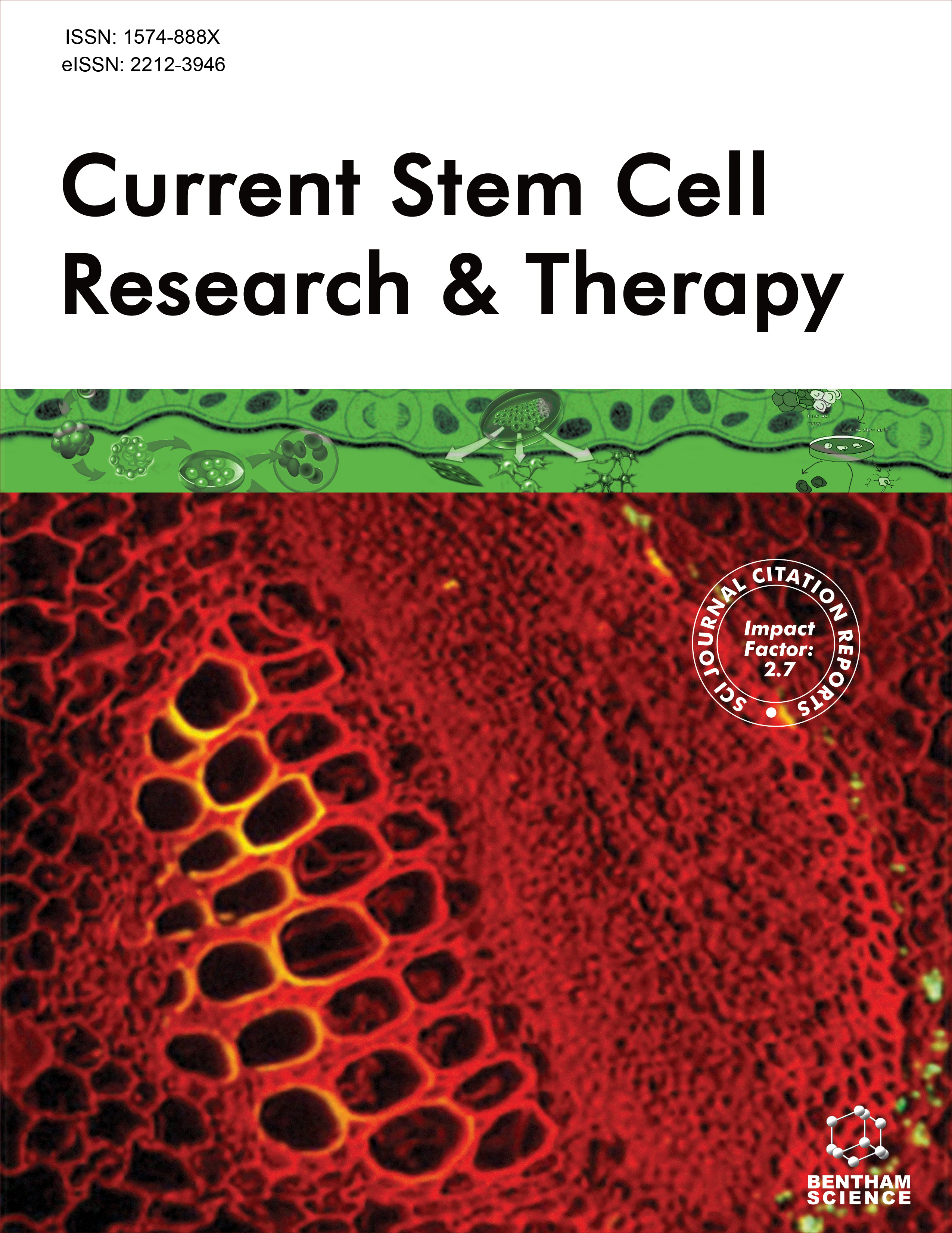- Home
- A-Z Publications
- Current Stem Cell Research & Therapy
- Previous Issues
- Volume 2, Issue 4, 2007
Current Stem Cell Research & Therapy - Volume 2, Issue 4, 2007
Volume 2, Issue 4, 2007
-
-
Small RNAs, Big Potential: The Role of MicroRNAs in Stem Cell Function
More LessAuthors: Kara M. Foshay and G. I. GallicanoMicroRNAs (miRNAs) are a newly discovered, yet powerful mechanism for regulating protein expression via mRNA translational inhibition. Loss of all miRNA function within mice leads to embryonic lethality with a loss of the stem cell population in the epiblast and failure to form a primitive streak. These data suggest that miRNAs play a major role in embryonic development. As critical regulation of protein expression is also importa Read More
-
-
-
Participation of Adult Bone Marrow-Derived Stem Cells in Pancreatic Regeneration: Neogenesis Versus Endogenesis
More LessAuthors: Svetlana Iskovich, Ayelet Kaminitz, Michal P. Yafe, Keren Mizrahi, Jerry Stein, Isaac Yaniv and Nadir AskenasyRegenerative medicine opens new avenues and promises towards more effective therapies for autoimmune disorders. Current therapeutic strategies for type I diabetes focus on three major directions, with distinct advantages and disadvantages: arrest of autoimmunity, islet transplantation and generation of neoislets. There is mounting evidence that candidate stem cells residing in the hematopoietic compart Read More
-
-
-
Stem Cells as In Vitro Models of Disease
More LessAuthors: Pilar Ruiz-Lozano and Prithi RajanAlthough the use of stem cells in cell-replacement therapies by transplantation is obvious, another equally important and interesting application of stem cells is to use them in disease modeling. Disease models serve as a platform to dissect the biochemical mechanisms of normal phenotypes and the processes which go awry during disease conditions. Particularly in complex, multigenic diseases, molecular studies lead to a gre Read More
-
-
-
Therapeutic Potential of Stem/Progenitor Cells in Human Skeletal Muscle for Cardiovascular Regeneration
More LessAlthough myoblast transplantation in patients with ischemic heart failure results in a significant improvement of cardiac function, subsequent studies have consistently shown the myotubes formation in the absence of electromechanical coupling with the neighboring host myocardium, accompanied with the short-term release of paracrine effectors from implanted cells. One major pitfall of using myoblasts is that transpl Read More
-
-
-
Umbilical Cord Blood: A Unique Source of Pluripotent Stem Cells for Regenerative Medicine
More LessAuthors: David T. Harris and Ian RogersIt is estimated that almost 1 in 3 individuals in the United States might benefit from regenerative medicine therapy. Unfortunately, embryonic stem (ES) cell therapies are currently limited by ethical, political, biological and regulatory hurdles. Thus, for the foreseeable future, the march of regenerative medicine to the clinic will depend upon the development of non-ES cell therapies. Current sources of non-ES cells easily av Read More
-
-
-
Mesenchymal Stromal Cells from Umbilical Cord Blood
More LessAuthors: Karen Bieback and Harald KluterMesenchymal Stromal Cells (MSC) are key candidates for cellular therapies. Although most therapeutic applications have focused on adult bone marrow derived MSC, increasing evidence suggests that MSC are present within a wide range of tissues. Umbilical cord blood (CB) has been proven to be a valuable source of hematopoietic stem cells, but its therapeutic potential extends beyond the hematopoietic component suggest Read More
-
-
-
Expansion of Umbilical Cord Blood for Clinical Transplantation
More LessAuthors: David N. Haylock and Susan K. NilssonSince the first successful cord blood transplant was performed in 1988 there has been a gradual increase in the use of cord blood for hemopoietic stem cell transplantation. Worldwide, over 8,000 unrelated cord blood transplants have been performed with the majority being for children with hemopoietic malignancies. Transplantation for adults has increased but is limited by the low number of nucleated cells and CD34+ cells Read More
-
Volumes & issues
-
Volume 20 (2025)
-
Volume 19 (2024)
-
Volume 18 (2023)
-
Volume 17 (2022)
-
Volume 16 (2021)
-
Volume 15 (2020)
-
Volume 14 (2019)
-
Volume 13 (2018)
-
Volume 12 (2017)
-
Volume 11 (2016)
-
Volume 10 (2015)
-
Volume 9 (2014)
-
Volume 8 (2013)
-
Volume 7 (2012)
-
Volume 6 (2011)
-
Volume 5 (2010)
-
Volume 4 (2009)
-
Volume 3 (2008)
-
Volume 2 (2007)
-
Volume 1 (2006)
Most Read This Month
Article
content/journals/cscr
Journal
10
5
false
en


